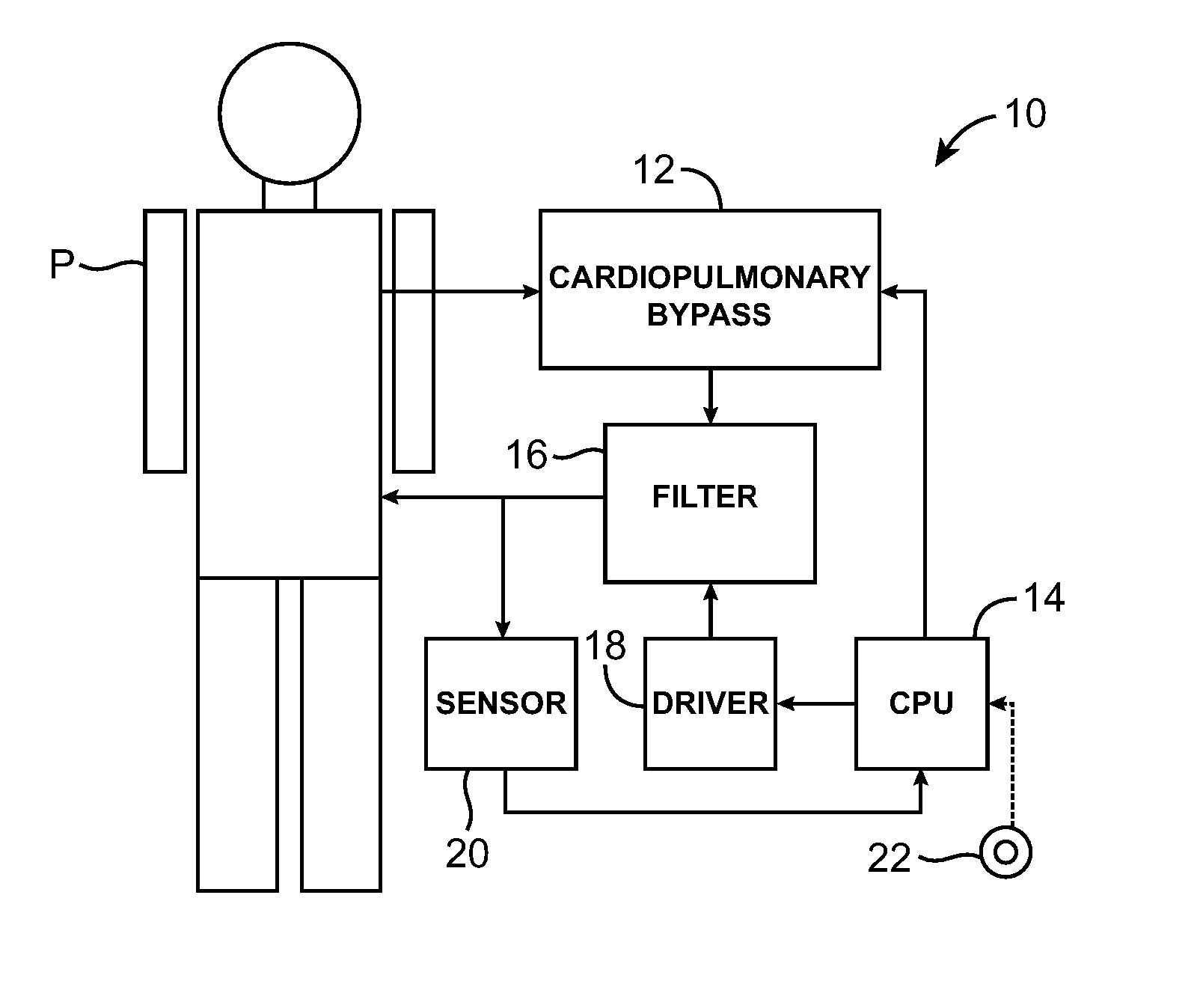Ultrasonic Material Removal System for Cardiopulmonary Bypass and Other Applications
a technology of ultrasonic material removal and cardiopulmonary bypass, which is applied in the field of ultrasound filter, can solve the problems of difficult to effectively remove undesirable materials from blood and other biological fluids prior to introduction into patients, difficult to effectively remove microbubbles, and relative challenges, and achieve the effect of facilitating the sterilization of the system and balanced flow resistan
- Summary
- Abstract
- Description
- Claims
- Application Information
AI Technical Summary
Benefits of technology
Problems solved by technology
Method used
Image
Examples
Embodiment Construction
[0027] The present invention generally provides improved devices, systems, and methods for manipulating target materials within fluids and / or separating those target materials from fluids. Advantageous embodiments allow filtration of acoustically manipulatable or low-density materials (such as bubbles, microbubbles, microspheres, beads, microbeads, and / or the like) from blood or other biological fluids. Exemplary embodiments use acoustic or ultrasound waves to drive microbubbles across a flow of blood within a conduit and towards a target matter removal port. Hence, aspects of the invention may have applications for removing gaseous bubbles or microparticulates during cardiopulmonary bypass, dialysis treatments, cell savers blood scavenging and separation for return to the patient during surgery, as a supplemental system for catheters, during femoral artery to femoral artery (sometimes referred to as “fem-fem”) bypass procedures, during known or newly developed blood filtration (inc...
PUM
| Property | Measurement | Unit |
|---|---|---|
| wavelengths | aaaaa | aaaaa |
| frequencies | aaaaa | aaaaa |
| frequencies | aaaaa | aaaaa |
Abstract
Description
Claims
Application Information
 Login to View More
Login to View More - R&D
- Intellectual Property
- Life Sciences
- Materials
- Tech Scout
- Unparalleled Data Quality
- Higher Quality Content
- 60% Fewer Hallucinations
Browse by: Latest US Patents, China's latest patents, Technical Efficacy Thesaurus, Application Domain, Technology Topic, Popular Technical Reports.
© 2025 PatSnap. All rights reserved.Legal|Privacy policy|Modern Slavery Act Transparency Statement|Sitemap|About US| Contact US: help@patsnap.com



